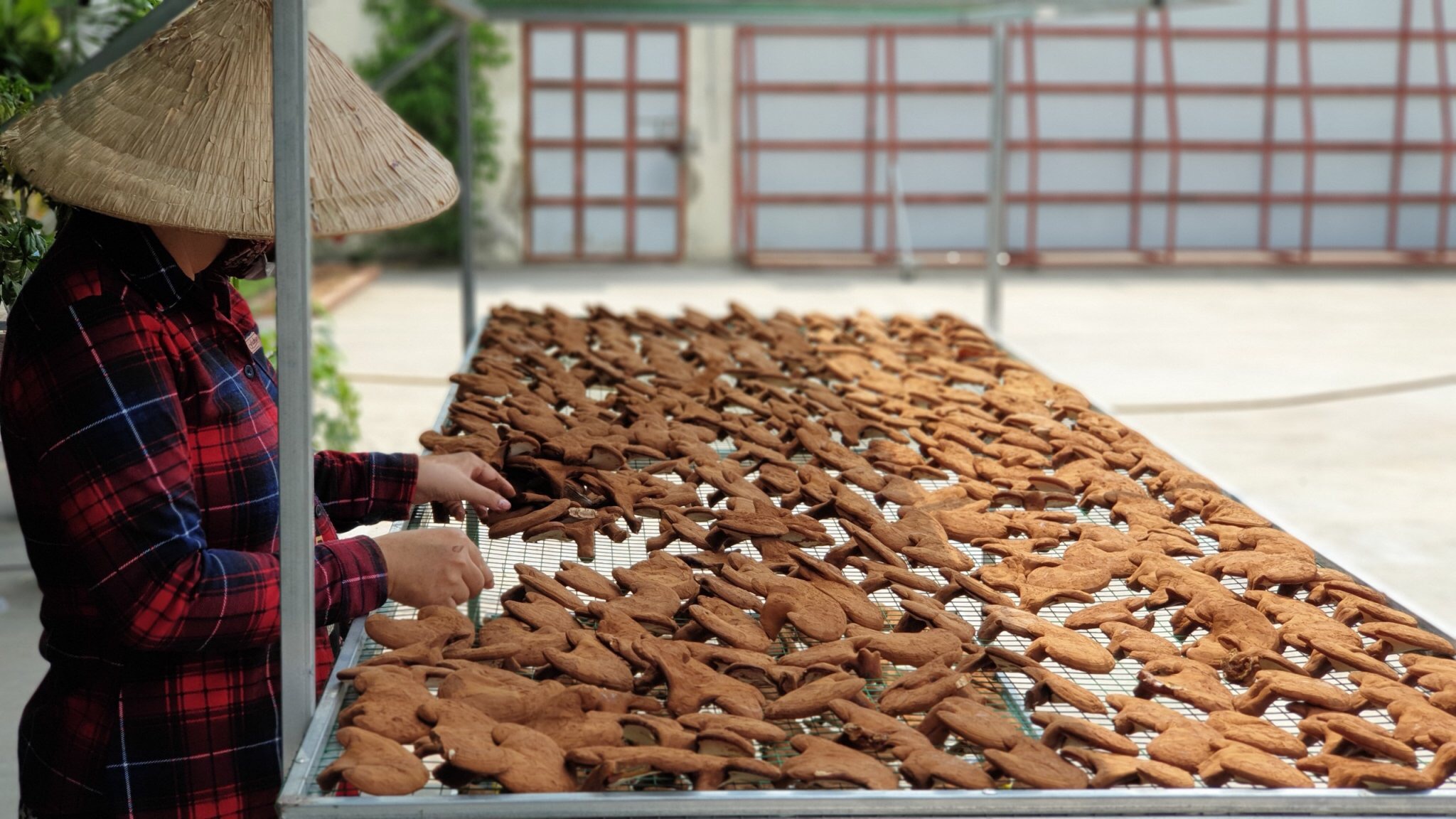
Reishi Mushrom fights Herpes Symptoms
Reishi mushroom
The reishi mushroom, also known as Ganoderma lucidum, is a fungus that has been used medicinally for centuries in China, Japan, and Korea (Paterson 2006). Some of the components of reishi appear to have antiviral properties (Paterson 2006).
Researchers have identified two different compounds in the reishi mushroom, known as GLPG (Ganoderma lucidum proteoglycan) and APBP (acidic protein bound polysaccharide), which showed strong antiviral activities against both HSV-1 and HSV-2 in vitro (Liu 2004; Li 2005; Kim 2000).

Preparations of the reishi mushroom have also shown promising results in human trials. Reishi was very effective in reducing pain caused by herpes and shingles infections that did not respond to standard treatment. Also, an herbal mixture containing reishi reduced shingles pain. In addition, another reishi-containing herbal mixture shortened the duration of symptoms in patients with oral and genital herpes infections (Hijikata 1998; Hijikata 2005; Hijikata 2007).
Much of reishi’s benefit may be due to its ability to combat immunosenescence – the normal decline of the immune system that accompanies aging. Reishi mushrooms attack and reverse immunosenescence through the combined effects of three compounds: first, a group of long-chain carbohydrates called polysaccharides, second, a unique protein named LZ-8 and third, a small group of steroid-like molecules called triterpenes (Bao 2001; Xu 2011; Yeh 2010).
Together, these three reishi components achieve the dual goals of promoting healthy immune responses against viral, bacterial, or fungal infections, while suppressing excessive or chronic inflammation that threatens long-term health.
Among its broad-spectrum immune-boosting effects are the following:
• Reishi promotes specialization of dendritic cells and macrophages. These cells are essential in allowing individuals to react to new threats, to vaccines, and cancer cells (Cao 2002; Lai 2010; Jan 2011; Ji 2011; Chan 2005).
• Reishi’s effects on dendritic cells have been proven to boost the response to tetanus vaccine. The mushroom’s proteins are also under investigation as “adjuvants” to emerging cancer DNA vaccines and other immune-based cancer treatments (Lai 2010; Chu 2011; Lin 2011; Zhu 2012).
• Reishi polysaccharide triggers growth and development of bone marrow, where most immune cells are born. Following bone marrow eradication by chemotherapy, reishi increased production of both red and white blood cells (Zhu 2007).
• Reishi increases numbers and functions of many cell lines in the immune system, such as natural killer cells, antibody-producing B cells, and the T cells responsible for rapid response to a new or “remembered” antigen (Jan 2011; Wang 2012; Jeurink 2008).
On the other side of the immunosenescence coin, reishi’s various components work to suppress inflammatory cytokines produced during chronic inflammation, as seen for example in rheumatoid arthritis, while maintaining normal acute inflammatory responses (Ji 2011; Kohda 1985; Ho 2007; Ko 2008; Xi Bao 2006). Under conditions of chronic inflammation, reishi reduces inflammatory promoters (Dudhgaonkar 2009).
For more information on the benefits of the Reishi Mushroom, please our ‘Product Information’ page.
For orders: Please contact us on our “Contact page”.
References:
https://www.ncbi.nlm.nih.gov/books/NBK92757/
https://medlineplus.gov/druginfo/natural/905.html
